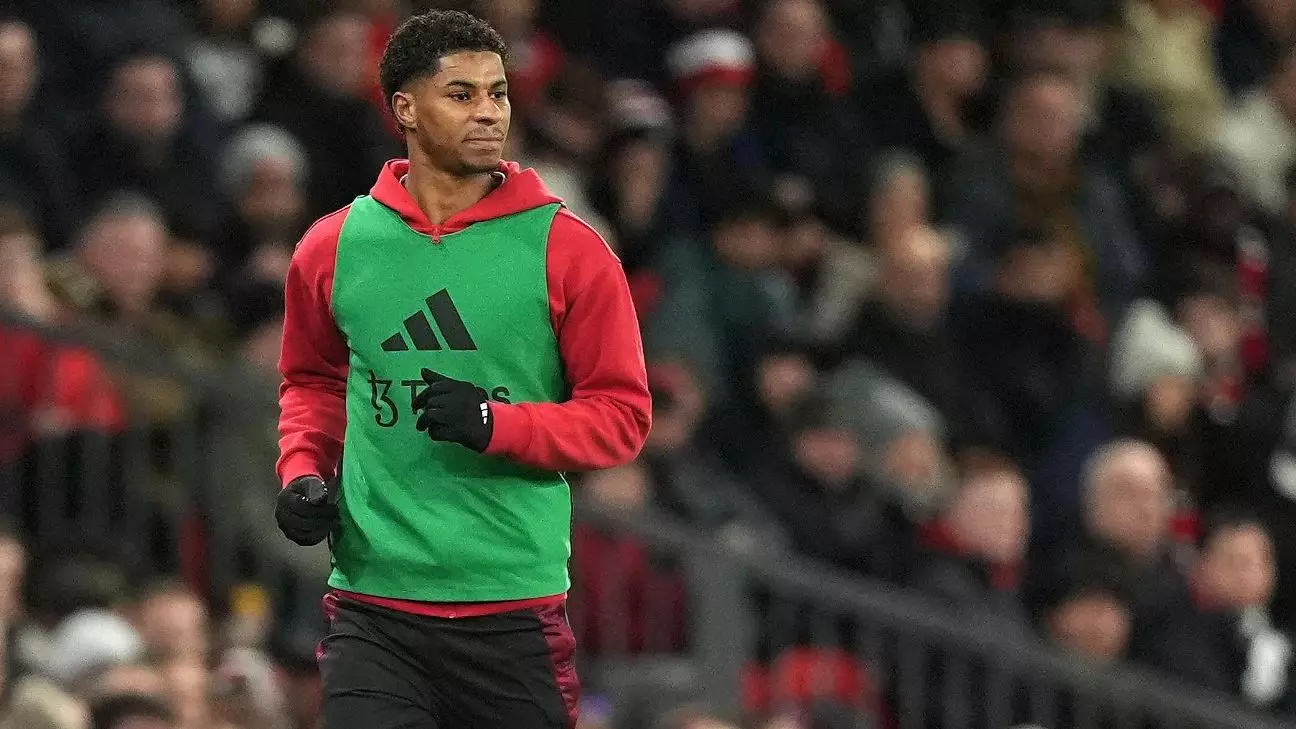The relationship between a coach and his players is often pivotal in shaping a team’s success. In the recent fallout concerning Marcus Rashford’s exit from Manchester United, it becomes evident how differing football philosophies can lead to uncomfortable splits. Ruben Amorim, the head coach of Manchester United, candidly addressed the reasons behind Rashford’s loan move to Aston Villa, suggesting that the talented forward could not align with his tactical approach. This schism highlights the reality that even skilled players can be incompatible with a coach’s vision, leading to a misalignment that can diminish team cohesion.
Amorim commented on the complexities of managing player dynamics, noting that sometimes a player’s brilliance under one coach does not translate under another. This is a common scenario faced by managerial figures across the sport; a player can shine in one context yet struggle in another. Rashford’s transition away from Manchester United, where he initially had a fruitful partnership, underscores the volatility within player-coach relationships, especially when the implementing tactics diverge significantly from the player’s natural tendencies.
The Impact of Management Decisions
Rashford, once a stalwart for United, scored crucial goals—including Amorim’s first goal during his tenure—but his reduced role in the squad following a tempestuous December suggests a schism between the player’s preferred style of play and what the coach envisioned. Omitted from critical fixtures, including the Manchester derby, Rashford’s presence in the squad dissipated, culminating in a temporary relocation to Villa Park. Amorim’s acknowledgment of this decision and the necessity behind it reveals the pressures faced by modern coaches in making tough calls for the greater good of the team.
Amorim emphasized the importance of building a cohesive unit, stating that not all players would seamlessly adapt to his footballing philosophy. He encapsulated his views by affirming that these decisions, while challenging, are essential for a coach invested in establishing a successful team framework. This instance shines a light on the often harsh realities of elite football, where talent alone is insufficient to guarantee inclusion in a matchday squad.
A New Era and the Challenge Ahead
As Amorim gears up for the upcoming FA Cup clash against Leicester City, the challenge of strengthening team dynamics takes center stage. Competing against Ruud van Nistelrooy, who briefly held the caretaker role at United before Amorim’s appointment, adds another layer to this emerging narrative. Despite initial thoughts of incorporating Van Nistelrooy into his technical staff—suggesting a lasting legacy from the club’s history—Amorim chose to forge his path independently. This decision serves as a reflection of his commitment to cultivating an environment where he can implement his methodologies without external interference, regardless of the popularity such a move might entail.
In the world of football, the balancing act between maintaining respect for past legends and asserting one’s distinct leadership can be precarious. Amorim’s choice to establish clear boundaries with Van Nistelrooy highlights his determination to prioritize his management approach and team cohesion over personal loyalties. This tough but necessary stance underlines a fundamental truth in coaching: respect must coexist with authority.
As the dust settles, both Marcus Rashford and Ruben Amorim face critical junctures in their respective careers. Rashford’s loan to Aston Villa provides him with an opportunity to reinvigorate his game under a different tactical environment, potentially paving the way for a successful return to United or a new beginning elsewhere. In contrast, Amorim’s focus on building a solid foundation at Manchester United will involve navigating the intricacies of talent management while remaining loyal to his vision.
This situation exemplifies the perpetual flux within the competitive landscape of football. Success is not merely a result of talent but a product of synchronization between a coach’s ideology and a player’s abilities. As the football world watches closely, the trajectories of both Rashford and Amorim will be closely scrutinized, serving as a reminder of the complex web of relationships and strategies that underpin the beautiful game.

Leave a Reply